In most dictionaries the word "consensus" means "general agreement" or something very similar. "Consensus" to an NGO or agency employee has taken on another meaning attached to a process. Sometimes it is referred to as the Delphi Principle where a specific response (that of the NGO or agency) is the objective. Have you ever wondered how people are manipulated by others? Excerpt from The Consensus Process: Developing an appropriate response (from eco-loglic, May/June, 1997):
Objectives
The general objective of all stakeholder councils is to promote three primary values: environmental protection; equity; and sustainable economic development. To promote these values, a comprehensive "community" plan must be developed which links, or "integrates," all three values. In some communities, stakeholder councils are formed to work on a single component of a comprehensive plan that is to be combined with the work of other councils that may be working on different components in different geographical areas of the same community. The various councils may or may not know about the work of other councils that is underway simultaneously.
Currently, the most common stakeholder councils are related to the "visioning" process to create "Sustainable Communities;" Ecosystem Management Plans; Heritage Area or Corridor Plans; River Protection Plans; Biosphere Reserves; and Economic Renewal Plans. Almost always, the plan will encompass more than one political jurisdiction. In some instances, several counties and states may be included, as in the case of the East Texas Ecosystem Plan, which embraced 73 Texas counties and a small portion of Louisiana. In other instances, the plan may be confined to a single county or city. Rest assured, that when a plan focuses on a single town or county, someone, somewhere, is planning to incorporate that plan into a multi-jurisdictional plan.
The stated purpose of the stakeholder council may be related to environmental protection only, which is usually referred to as natural resource management. It could be related to any one of several other single subjects such as economic renewal, education, emergency response, or transportation. Or, the stated purpose could be to develop a comprehensive plan that addresses all the issues. Whatever the stated purpose, it will attempt to integrate environmental protection, equity, and sustainable economic development.
Complete article in Comments following or http://www.sovereignty.net/p/sd/conresponse.htm
Posts and Comments from Readers
Please include yourself in the discussion. Post a comment.
Friday, September 14, 2007
"Consensus" Doesn't Mean The Same To You As It Does To An NGO Or Bureaucrat - This Is A Must Read
Subscribe to:
Post Comments (Atom)












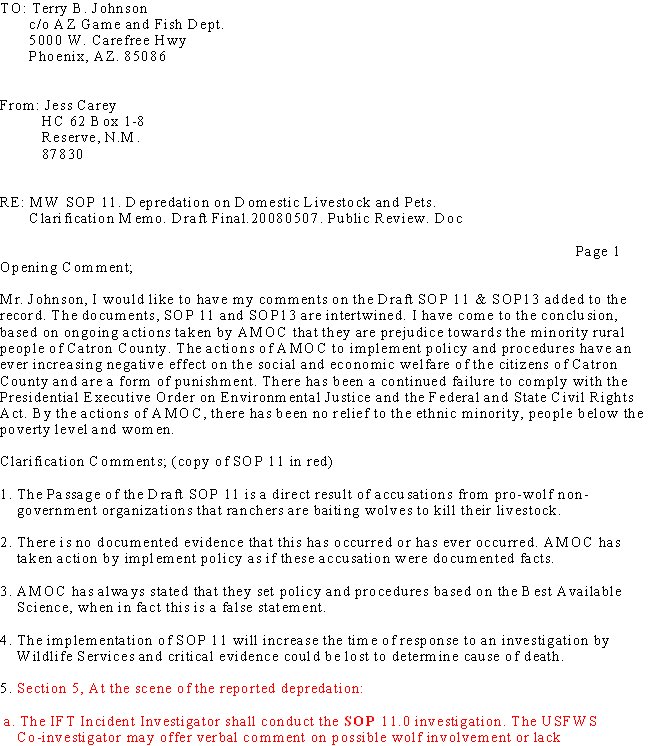
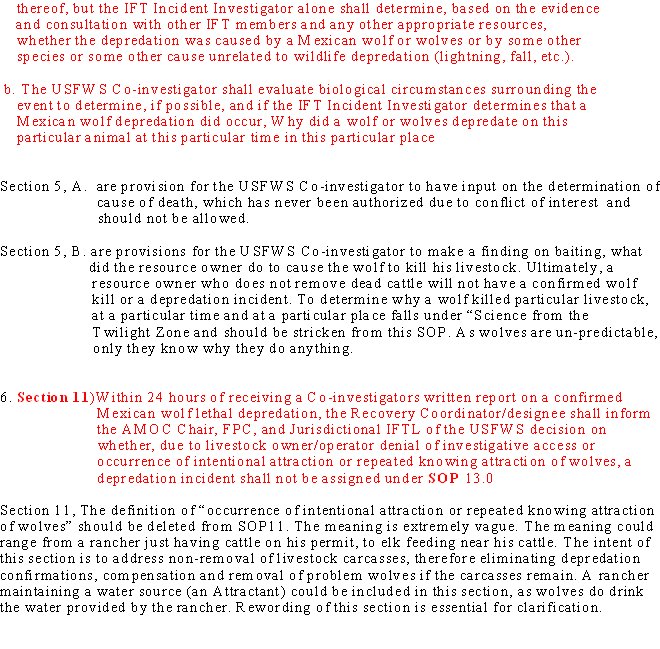
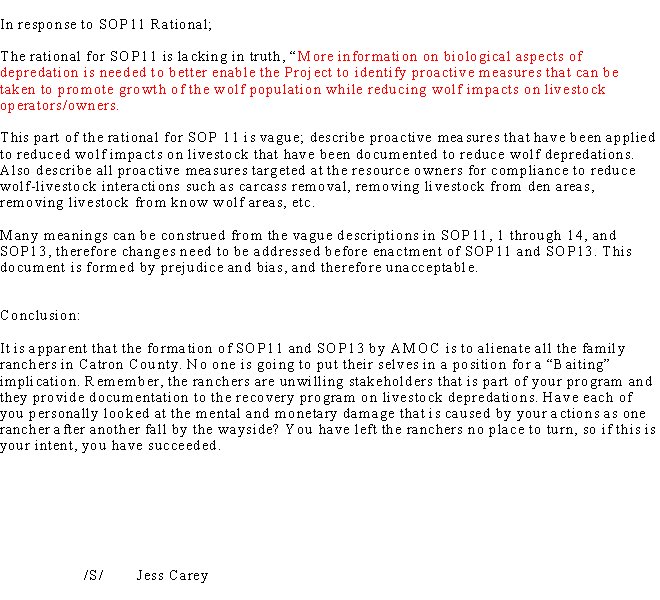




.jpg)


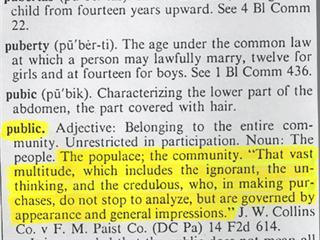









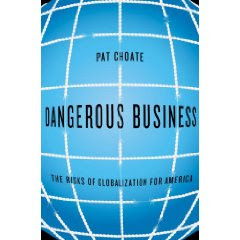





1 comment:
The Consensus Process:
Developing an appropriate response
(from eco-logic, May/June, 1997)
In communities across America, "stakeholder" councils are being formed, or have already been formed, to advance Agenda 21 to transform cities and towns into "sustainable communities." The "consensus process" is used to gain the appearance of public support for the principles of sustainability, applied to a particular community. The process is designed to take the public policy- making function away from elected officials and place it in the hands of professional bureaucrats, while giving the appearance of broad public input into the decision-making process.
Stakeholder councils are called by many names and are created for a variety of specific purposes. Whatever they are called, and whatever the stated purpose for which they are created, they all have several common characteristics, and all have a common objective: the implementation of some component of Agenda 21. To develop an effective local response, it is necessary to understand the objectives, the process, the techniques, and the players. While each community may experience a variety of different approaches, it is necessary to recognize the common principles that guide all such councils.
Objectives
The general objective of all stakeholder councils is to promote three primary values: environmental protection; equity; and sustainable economic development. To promote these values, a comprehensive "community" plan must be developed which links, or "integrates," all three values. In some communities, stakeholder councils are formed to work on a single component of a comprehensive plan that is to be combined with the work of other councils that may be working on different components in different geographical areas of the same community. The various councils may or may not know about the work of other councils that is underway simultaneously.
Currently, the most common stakeholder councils are related to the "visioning" process to create "Sustainable Communities;" Ecosystem Management Plans; Heritage Area or Corridor Plans; River Protection Plans; Biosphere Reserves; and Economic Renewal Plans. Almost always, the plan will encompass more than one political jurisdiction. In some instances, several counties and states may be included, as in the case of the East Texas Ecosystem Plan, which embraced 73 Texas counties and a small portion of Louisiana. In other instances, the plan may be confined to a single county or city. Rest assured, that when a plan focuses on a single town or county, someone, somewhere, is planning to incorporate that plan into a multi-jurisdictional plan.
The stated purpose of the stakeholder council may be related to environmental protection only, which is usually referred to as natural resource management. It could be related to any one of several other single subjects such as economic renewal, education, emergency response, or transportation. Or, the stated purpose could be to develop a comprehensive plan that addresses all the issues. Whatever the stated purpose, it will attempt to integrate environmental protection, equity, and sustainable economic development.
The Process
Stakeholder councils do not simply appear. Nor are they formed as the result of citizen response to a common problem. They are created -- with great care -- by someone. They could be formed by a government agency, or by several government agencies working together; they could be formed by NGOs (non-government organizations) or by a combination of government agencies and NGOs -- which is often the case. The Environmental Protection Agency and several other federal agencies offer grants to NGOs and local government agencies as incentives to create these councils and develop plans to achieve sustainable communities. Whoever instigates the process will carefully select individuals from the community to participate in a meeting which will evolve into a series of meetings. The individuals selected will be chosen because they are known to share philosophical objectives, and to represent broad segments of the community. The poor, disabled, indigenous populations are specifically targeted. Representatives from government agencies are also targeted. Typically, at least one elected official from each of the political jurisdictions in the plan area are invited. Someone from industry, and a landowner or two are also among those invited.
Formation of the original group is extremely important. The group must be dominated by people who are expected to support the objectives of the instigators. There also has to be an appearance of broad community representation. The original group may be quite small, or it could be quite large, depending upon the objectives and the size of the community and the plan area. The initial meeting is rarely advertised. Participants are invited personally, and frequently hold several meetings before the press or the community is ever informed. By the time the public becomes aware of the existence of the stakeholders council, it is pretty well organized and its work is well underway.
The Techniques
The Consensus Process -- often called "collaborative decision-making" -- is a process that begins with a predetermined outcome. The agencies or NGOs that assemble an Ecosystem Management visioning council, intend to establish an ecosystem management plan. The instigators know what they want included in the plan before the first meeting is ever scheduled. Those who assemble Sustainable Community visioning councils intend to establish a plan to achieve their vision of a sustainable community. The literature will say that the instigators want broad community input. In reality, the outcome has been decided before the first meeting begins; the real purpose for the process is to "educate" the participants.
The meetings will be conducted by a trained facilitator. A consensus-building meeting is vastly different from a meeting conducted by Robert's Rules of Order. In a consensus-building meeting -- there are no votes. There is no debate. The idea is to avoid conflict and confrontation between and among differing views. The facilitator leads the discussion with questions that are skillfully crafted to elicit no response. Questions are framed to force respondents to disagree with a statement with which most reasonable people would agree. For example, a facilitator might ask: "Is there anyone who would disagree that we have a responsibility to leave future generations sufficient resources to meet their need?" Obviously, no reasonable person can disagree with such a statement. Silence -- no response -- implies that a consensus has been reached on the need to protect resources for future generations. The example is an oversimplification, but it illustrates the technique used by the facilitator.
Despite the careful selection of the participants, the facilitator may encounter an individual who does disagree with the questions. The facilitator is trained to marginalize such an individual by making him or her look silly by asking another, even more extreme question, such as: "Surely you are not telling this group that you feel no responsibility to your grandchildren, are you?" With such tactics, one who objects or disagrees very often is quickly labeled as a trouble-maker and is either ignored or excluded from the group. (See cologic, March/April, 1997, for a more detailed discussion on techniques).
Eventually, a report will be written by a professional. It will be "The Plan," or the document produced by the group. Regardless of what the group's stated purpose may be, the final document will include language that says the plan is designed to integrate ecology, equity, and the economy; environmental protection, equity, and sustainable development.
The Players
The players -- the instigators -- will include federal, state, and/or local government appointed officials. Working hand-in-hand, there will also be one or more representatives from NGOs that may or may not be recognizable. The Nature Conservancy and the Sierra Club are two of the more active NGOs instigating these stakeholder councils. Frequently, however, a new NGO will be created expressly for the purpose of instigating a stakeholder council in a given community. One or more of the larger NGOs, or an organization such as the Tides Foundation, will supply the start-up money and send a couple of professionals into a community to create an NGO such as "Friends of Hollow Rock, Inc." or something similar. Sometimes an existing local NGO will be used, with substantial financial and leadership help from a larger NGO, or with help from the federal government through one of the many grants that are available for the purpose.
Whenever it is possible, the instigators will recruit a well-known local figure -- a politician, businessman, or landowner -- to be the spokesperson. In Racine, Wisconsin, no less a figure than Samuel C. Johnson, CEO of Johnson Wax Company, was chosen to convince his neighbors that sustainability was the only way to go. Such individuals give credibility to the process and can have enormous persuasive power over local residents.
With such a cast of players, using techniques that are skillful to the point of deception, in a process designed to produce a predetermined outcome, it is little wonder that the objectives of Agenda 21 are being implemented in cities, towns and across the countryside of America. Those who recognize the inherent dangers in allowing non-elected bureaucrats to develop public policy, and those who can see the socialistic underpinnings of a managed society in the objectives of Agenda 21, need to rise to the occasion and meet the challenge as skillfully as it has been launched. Here are some ideas that may be helpful.
Response ideas
There are at least two ways to respond to stakeholder c ouncils: (1) boycott the meetings and protest the result; (2) participate in the meetings and influence the outcome. In some instances, a boycott may be effective in delaying the process. In communities where the public can be reached by radio or newspapers, and the majority of people are informed and aware, the instigators can be marginalized as extremists. Where influential community leaders can be persuaded to join the boycott, the tactic may succeed -- temporarily. Sooner or later, however, the issue of sustainable development in every community will have to be confronted.
The idea of sustainable development is extremely positive and is well received in many communities. Boycott and protest will not be effective in these communities. In fact, such actions would be counter-productive, and reduce the credibility of those who engage in the activity. In these communities, participation is the better course of action.
Advocates of private property rights are not likely to be among those selected to participate in the original meetings. Therefore, advocates must be watchful and tuned-in to any activity that appears to be the beginning of a visioning process or the formation of a stakeholders council. When a meeting is scheduled, advocates should attend -- invited or not. The consensus process is advertised as one which involves all the "stakeholders;" every affected person has a stake in the outcome of the process and is, therefore, entitled to participate.
(For clarity, "advocates" will be used to refer to individuals who advocate private property rights, individual freedom, free markets, and national sovereignty; "proponents" or "instigators" will be used to refer to those who promote sustainable development through the consensus process.)
The first objective of advocates who attend these meetings should be to determine who the players are, and what, exactly, is the purpose of the sessions. Some diplomacy is in order. Direct questions, especially too many questions, too quickly asked, will identify the advocate as a potential trouble maker. The critical questions "who" and "why" should be answered with as little attention as possible drawn to the advocate. Answers can be obtained indirectly. A phone call to the owner of the facility where the meeting is being held can determine who made the arrangement for its use.
A good way to get information about the facilitator is to praise the facilitator, and ask something such as "Where did you get that vast storehouse of knowledge?" Most speakers -- and meeting facilitators -- are suckers for praise, and will babble on for hours about themselves, if given the opportunity. It is an excellent way to learn what might otherwise be impossible to learn.
Once the advocate has a good understanding of the players and the objectives of the meetings, other advocates should be recruited to help influence the outcome. There should be enough advocates in the meeting to support one another and to distribute comments around the room. A single advocate, or even two or three, can easily be marginalized and labeled as trouble makers. If 15 to 20 percent of the group support the views of the advocates, and if the advocates are skillful, the advocates can alter the outcome of the process, and perhaps, take control of the process and instill their own values rather than the values of the instigators.
Early in the meeting process, usually at the first or second meeting, time will be devoted to identifying objectives or goals for the group. This is a critical time for the advocates. They must be present during this period. Objectives usually take several meetings to develop. Even if advocates arrive at the process after it has begun, it is important that they get involved in the development of objectives. Whatever the specific objectives of any group, the underlying principle of integrating environmental protection, equity, and sustainable economic development will be incorporated into the list.
Advocates should insist that the list of objectives include language such as: "promote individual freedom;" and "protect private property rights." There is likely to be little resistance to such language, especially if the advocates use the facilitator's technique and ask "Is there anyone who would disagree that individual freedom and private property rights are among the values we should ensure are available to future generations?" It is not difficult getting such language into the documents developed by consensus. In fact, most of the UN documents, and many of the federal government documents pay lip-service in the language to individual freedom and private property rights. Nevertheless, it will not be included unless it is specifically requested. It is important that the language be included to provide a basis for additional recommendations that come in the next phase.
Taking control
The most important function for the advocates is to ensure that whatever plan or document that is produced by the meeting process, has to be adopted by each and every body of elected officials that may be affected by it. This is the "killer" provision. There will be strong resistance to this provision. It is a provision that essentially negates the purpose of the consensus process and severely impairs the ability of the proponents -- non-elected bureaucrats -- to impose procedures and administrative regulations to advance their agenda. Advocates need to anticipate intense resistance and be prepared to overcome powerful arguments. Some of the arguments advocates will hear include:
Several jurisdictions are involved; it will take too long and will be too cumbersome to have each elected body approve the plan.
This is a multi-jurisdictional plan; the purpose is to provide a coordinated vision of an area broader than the jurisdiction of any single political body.
Pollution, poverty, and economic development do not respect political boundaries; these problems must be addressed on a broader scale.
The problems we are attempting to solve exist because existing political jurisdictions have been incapable of preventing, or solving them.
Approval by each and every elected body would, in effect, give veto power over a plan that affects the entire region to each and every elected body.
These are only a few of the very powerful arguments that will be offered to prevent local elected officials from having to approve the plan or document. Advocates need to be prepared to respond and defend their position.
Without question, the most important principle of self-governance enshrined in the Constitution that created our Republic, is the principle of limited government, empowered by the people who are governed. All government authority derives from the consent of the governed. It is the people who empower government by authorizing certain elected officials to administer the authority and power granted to government. The act of voting is the process by which power and authority is transferred from the individual to the elected official. Individuals control their government by controlling the election of those who are authorized to administer government's authority. It is only at the ballot box that government can be held accountable by the individuals who grant government its power.
In view of this exceedingly important reality, any process that allows people to be governed by a policy for which no elected official is directly accountable, aborts the first principle of our Constitution. The consensus process seeks to by-pass elected officials and develop policy through collaboration with "stakeholders," that are affected by it. The Constitution requires citizens to elect officials to make public policy; there is not a word in the Constitution about that responsibility being delegated to "stakeholders."
This is a "no compromise" issue for advocates; it is a "no-compromise" issue for proponents. How the issue is resolved will determine whether a given community continues to enjoy the benefits of the traditional American system of government, or begin a long slide down the slippery slope to managed communities in a society managed by unrestrained government authority.
The consensus process does not vote to resolve issues that are in dispute. If advocates have been able to recruit enough participants to assure a victory, they could insist that a vote be taken. Such a move would effectively destroy the consensus process, and the advocates would have gained control. The planning process could continue, if the proponents chose to do so, but the outcome would be much different from the outcome anticipated at the outset. More likely, there will not be a majority of advocates. So other strategies should be anticipated.
In the real world of consensus-building processes, advocates are in the distinct minority. To force a vote on such a vital issue would be foolish because the issue would then be dead. Using the techniques and processes of the instigators, advocates -- who realize that they are in the minority -- are perfectly within their rights to insist upon a minority report attached to the final document which states their position clearly on the issue of approval by elected officials. That may be as much as advocates can hope for in the consensus-building process, but it provides the basis for the next strategic phase of resistance.
Armed with the minority report that will be included in the final document, advocates should begin a personal campaign to inform and educate each elected official for whom they vote. The case presented to the elected officials should not be about the plan being developed, it should center on the fact that the plan's developers specifically excluded elected officials from exercising their Constitutional authority to approve the plan. Elected officials frequently resent being upstaged or by-passed. Even those officials who support the plan may resent being made irrelevant.
Advocates could develop a model resolution to be presented to the elected body which preempts the authority of the plan being developed. The resolution could cite Constitutional authority for public policy decisions and declare that no plan can be implemented in their city, county or state, whichever may be appropriate, without specific approval of the elected body. The process of educating the elected officials would provide an excellent platform for the education of the community as well. The media would be forced to report what appears to be a developing rift between the authority of elected officials and the authority assumed by non-elected consensus-builders. Care should be taken by advocates to avoid debating the plan, but keep attention focused on the issue of authority for policy making.
Advocates should realize that the preponderance of public opinion is on the side of sustainable development. Arguments against provisions and recommendations within the plan -- as grotesque as some of them may be -- are not likely winnable in the media or in public opinion. Policy-making by non-elected bureaucrats, rather than by accountable elected officials, however, is an argument that is winnable. It is the central issue. If the plan is subject to the approval of elected officials, citizens have the hope of changing or rescinding the plan by electing officials who share the values advocates promote. If the plan is not subject to the approval of elected officials, the plan will be implemented, and incrementally tighten its grip on individual citizens. Individual freedom will continue to diminish; private property rights will continue to erode; free markets will become managed markets; and national sovereignty will sacrificed on the altar of global governance.
Post a Comment